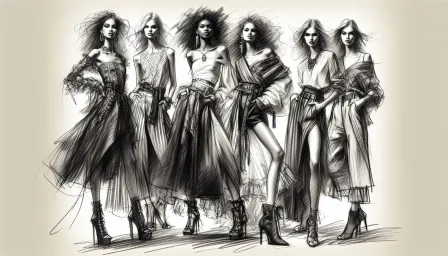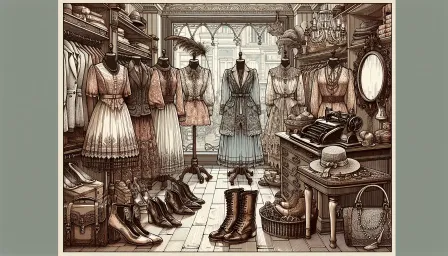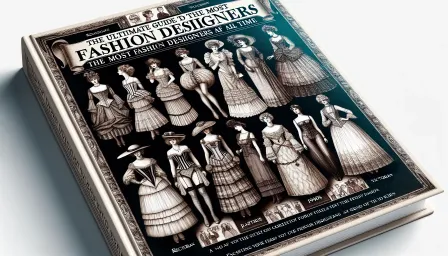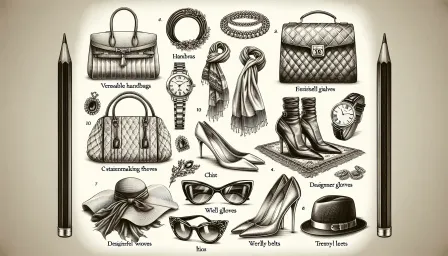Ultimate Guide to Fashion Models Measurements: Everything You Need to Know
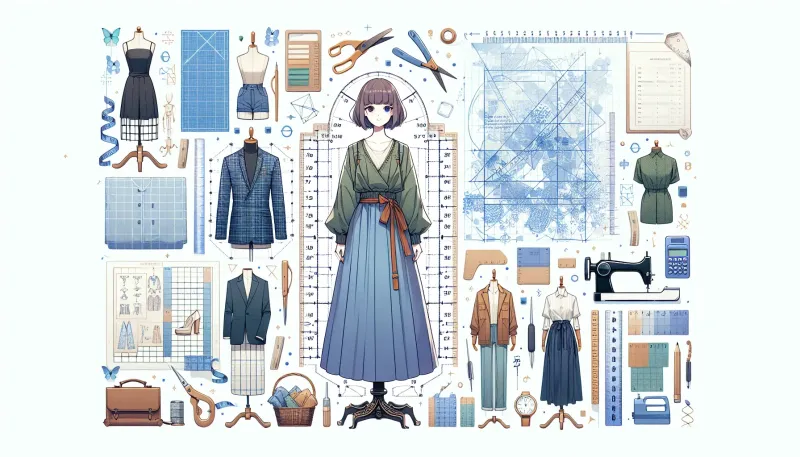
Discover the essential guide to fashion models measurements. Learn the standards, find out how they're measured, and why these measurements matter in the modeling industry.
Introduction
In the glamorous world of fashion, the measurements of models play a crucial role in their career success. Whether you're an aspiring model, a fashion student, or just curious, understanding fashion models measurements is key. This comprehensive guide aims to provide you with all the information you need to know about fashion models measurements.
Why Measurements Matter in Fashion Modeling
Measurements are vital in the modeling industry due to their role in fitting garments, advertising standards, and brand representation. Fashion designers create clothes to fit specific body types, and accurate measurements help models represent these designs effectively. Here are some reasons why these measurements are critical:
- Fitting Garments: Models need to fit the sample sizes created by designers. Consistent measurements ensure that the garments appear as intended during shows or photoshoots.
- Advertising Standards: Brands have established criteria for model representation, ensuring consistency in marketing materials.
- Brand Representation: Different brands seek different body types to portray their style and message effectively.
Standard Measurements for Fashion Models
Female Models
Female models' measurements often include the bust, waist, and hips, commonly referred to as the "big three." The standard measurements for female models typically fall within the following ranges:
- Bust: 34-36 inches (86-91 cm)
- Waist: 24-26 inches (61-66 cm)
- Hips: 34-36 inches (86-91 cm)
Height is also a critical factor, with most agencies looking for women who are between 5'8" and 5'11" (173-180 cm).
Male Models
For male models, the key measurements include the chest, waist, and inseam. The standard measurements typically fall within these ranges:
- Chest: 38-40 inches (97-102 cm)
- Waist: 30-32 inches (76-81 cm)
- Inseam: 32-34 inches (81-86 cm)
Height is also important for male models, with most agencies preferring heights ranging from 6'0" to 6'2" (183-188 cm).
How to Take Accurate Measurements
Taking accurate measurements is essential for models to present themselves correctly to agencies and clients. Here’s how to measure the key areas:
For Female Models
- Bust: Measure around the fullest part of the bust while wearing a non-padded bra.
- Waist: Measure around the narrowest part of the waist, usually just above the belly button.
- Hips: Measure around the widest part of the hips, including the fullest part of the buttocks.
For Male Models
- Chest: Measure around the fullest part of the chest, keeping the tape measure horizontal.
- Waist: Measure around the natural waistline, just above the hip bones.
- Inseam: Measure from the crotch to the bottom of the ankle.
The Role of Plus-Size and Petite Models
The fashion industry has started to embrace diversity, leading to more opportunities for plus-size and petite models. Plus-size models typically have larger measurements than standard models, often starting at size 12 and above. Petite models, on the other hand, are shorter than the standard height range, typically under 5'7" (170 cm).
How Agencies Use Measurements
Agencies use measurements to categorize and select models for specific roles. They maintain detailed profiles that include a model’s measurements, helping them match models with appropriate clients and jobs. Accuracy in these profiles is crucial for ensuring that both models and clients are satisfied with the fit and representation of clothing.
Alternative Measurements and Considerations
While the standard measurements are important, other body measurements can also play a role in the selection of fashion models. These include:
- Shoulder Width: Measuring from one shoulder edge to the other.
- Arm Length: Measuring from the shoulder to the wrist.
- Leg Length: Measuring from the hip to the ankle.
These additional measurements help in creating custom fits and are particularly relevant in high fashion and bespoke suit designing.
Common Misconceptions
There are several misconceptions about fashion models measurements that need to be addressed:
One Size Fits All
Many believe that there is a single standard measurement for all models, but in reality, measurements can vary widely depending on the market and the type of modeling.
Measurements Define Beauty
Measurements do not define a model’s beauty or worth. The fashion industry is increasingly recognizing the importance of diversity and inclusion.
Conclusion
Fashion models measurements are a fundamental aspect of the modeling industry, playing a critical role in garment fitting, advertising, and brand representation. Understanding these measurements and the process of taking them accurately is essential for anyone involved in fashion. The industry’s growing acceptance of diverse body types is a positive change, highlighting that beauty comes in all sizes.
By comprehensively understanding fashion models measurements, you can better navigate the industry, whether as an aspiring model, a fashion professional, or an enthusiast.




